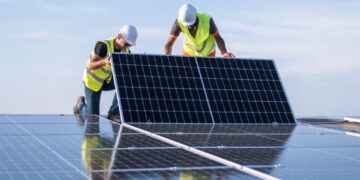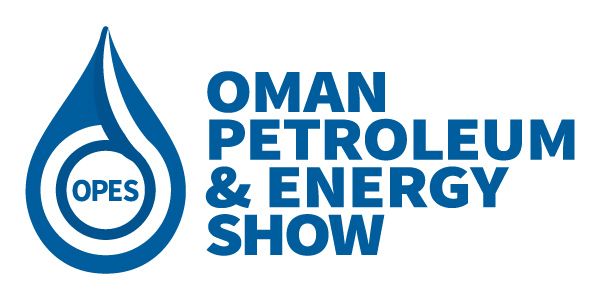By Kohler
Nigeria’s digital economy is developing rapidly as an increasingly tech-savvy population drives demand for connectivity.
Internet user penetration increased from 26% to almost 40% between 2017 and 2022, and Nigeria’s estimated number of people connected to the web has risen to more than 108 million.
This shift towards a digital and connected economy has a transformative impact on how people live and work, boosting skills, creating jobs and unlocking investment in areas like e-commerce.
Connected services require data-driven investments
Digitalization is also having a notable effect on investment in new communications infrastructure. Only recently, Google and cable partner WIOCC landed a new multi-million-dollar subsea cable in Africa. The Equiano cable starts in Portugal and runs along the West Coast of Africa before coming ashore at Lagos in Nigeria, among other points, establishing a new 12,000-kilometre, high-capacity internet connection between the African continent and Europe.
New cable capacity is also resulting in the construction of state-of-the-art data centers. Nigeria is home to one of the fastest-growing data center sectors in Africa – with the market set to grow at a compound annual growth rate of 17% from 2020−2026.
Many players are entering the data center market, with global digital companies wanting new infrastructure closer to their end-users. For example, Africa Data Centres has opened its 10MW LOS1 facility in Lagos, which, when fully built out, will comprise 6,000 sqm of space. Meanwhile, KASI Cloud has just broken ground on a new $250 million data center in Lagos – the first of several planned in Nigeria.
Ensuring data center resilience
Most of these new data centers are connected to the electricity grid. However, in the event of outages, mission-critical backup power is supplied by diesel generators. These tried-and-trusted machines kick in within seconds of a grid-related electricity failure, ensuring data center uptime and continuity of supply for digital services.
But how are the latest generation of diesel generators designed and built to meet the stringent requirements of data center applications? How can they deliver ultra-reliable and environmentally-responsible performance, when needed, under the most demanding conditions?
First, a broad range of power outputs is required to meet the diverse needs of hyperscale, colocation and edge operators. The latest generators for data centers provide massive options up to 4MW, supplying mission-critical power for even the largest facilities. Expert attention to system architecture and equipment redundancy help meet the highest performance and uptime levels.
Environmental performance is a critical consideration, too. Sustainability is vital for many data center operators in Nigeria, as with the rest of the world.
There is an expectation that generators are designed to minimize the release of harmful pollutants into the atmosphere.
Generator manufacturers, therefore, have invested heavily in emissions reduction technologies, either through in-cylinder techniques that reduce the pollutants emitted by an engine or through after-treatment, which further reduces these pollutants by treating the exhaust stream of the engine.
Increasingly, generator manufacturers supplying the data center sector are also making their products compatible with renewable fuels such as hydrotreated Vegetable Oil (HVO), produced from waste and residual fat fractions from the food industry. HVO is a “slot-in” replacement for regular diesel. It can reduce carbon emissions by up to 90 per cent without needing engine modifications or additional fuel tanks.
Scalability and modularity come next on the list. Generators are designed to be as compact as possible and can be designed to fit the tightest footprints. Many data centers in Nigeria are located close to users in metropolitan areas where space is at a premium.
For example, flexible canopies and containers provide bespoke solutions for data center applications. Edge data center generators might typically be housed within 20-foot, skin-tight canopies. Mid-range generators more suited to colocation data centers come in 40-foot containers rather than canopies, which means they can be stacked alongside standard-sized shipping containers for easy transportation. Hyperscale new builds up to 500 MW typically feature generators that are usually housed in larger, walk-in containers with thicker walls for sound attenuation.
Increasingly, generator suppliers are also looking to service the data center market in Nigeria through local facilities as close to the installation site as possible. Kohler, for example, has built a new facility in Ikeja in Lagos, where high-tech generators such as the KD Series are put together. The Lagos assembly plant means it is possible to supply KD-Series generators to highly bespoke specifications that allow them to meet individual data center requirements.
Data center operators demand the highest levels of uptime. Therefore, product excellence must also be supported with first-class after-market services, often ensuring same-day resolution of any maintenance issues, supported by immediate access to genuine parts.
A bright future for the data center market
It is clear, then, that strong demand for digital services is leading to a boom in the data center sector in Nigeria. Mission-critical power is a vital component of data center operations, and highly advanced generators play a central role in keeping these facilities online.
Kohler has a long history of supplying generators to the global data market, offering reliable, resilient products that are easy to maintain. Now, Kohler is well-positioned to support the Nigerian data center sector as a knowledgeable and reliable partner, helping support the country’s exciting shift towards becoming a more digital economy.























